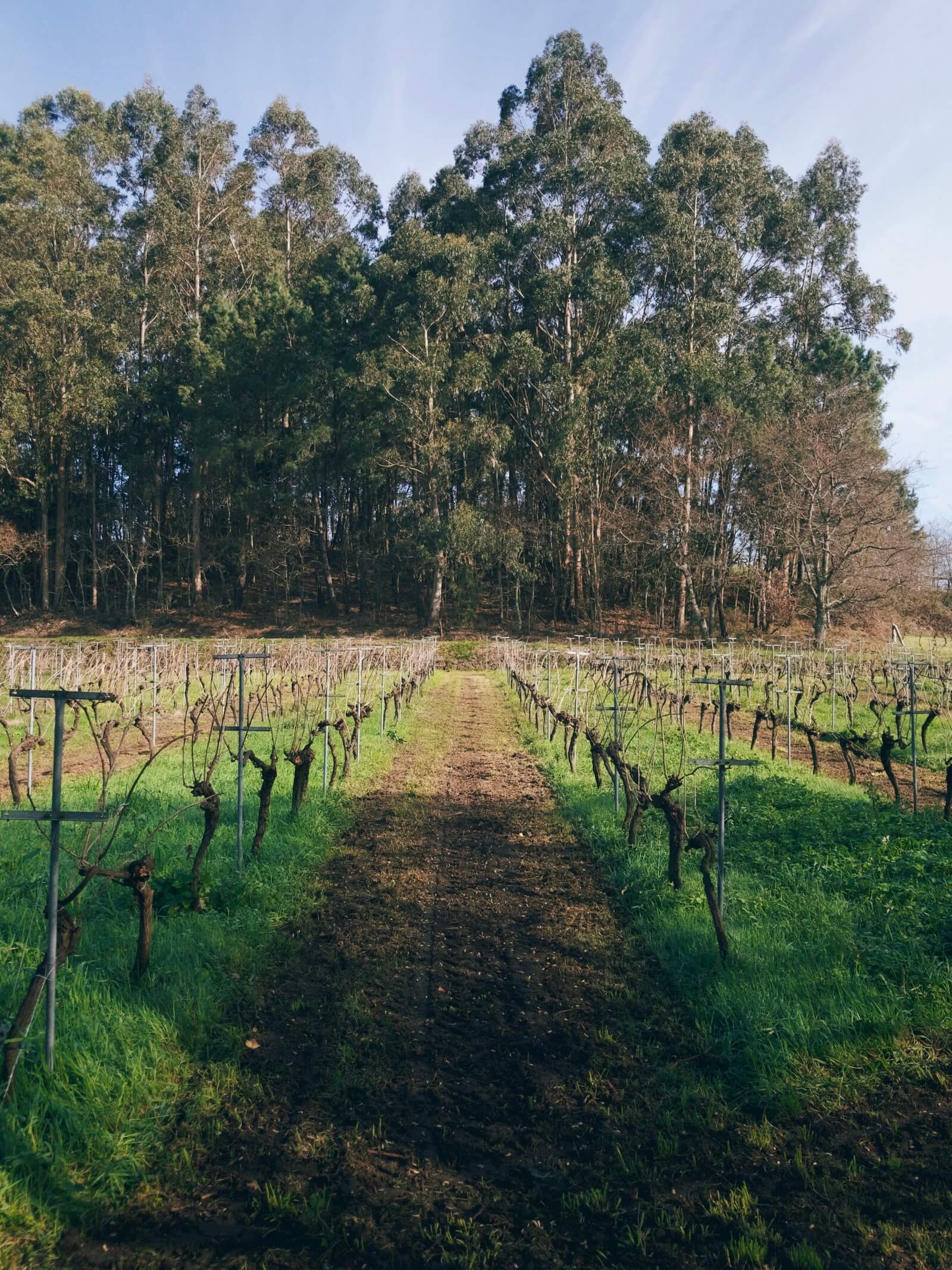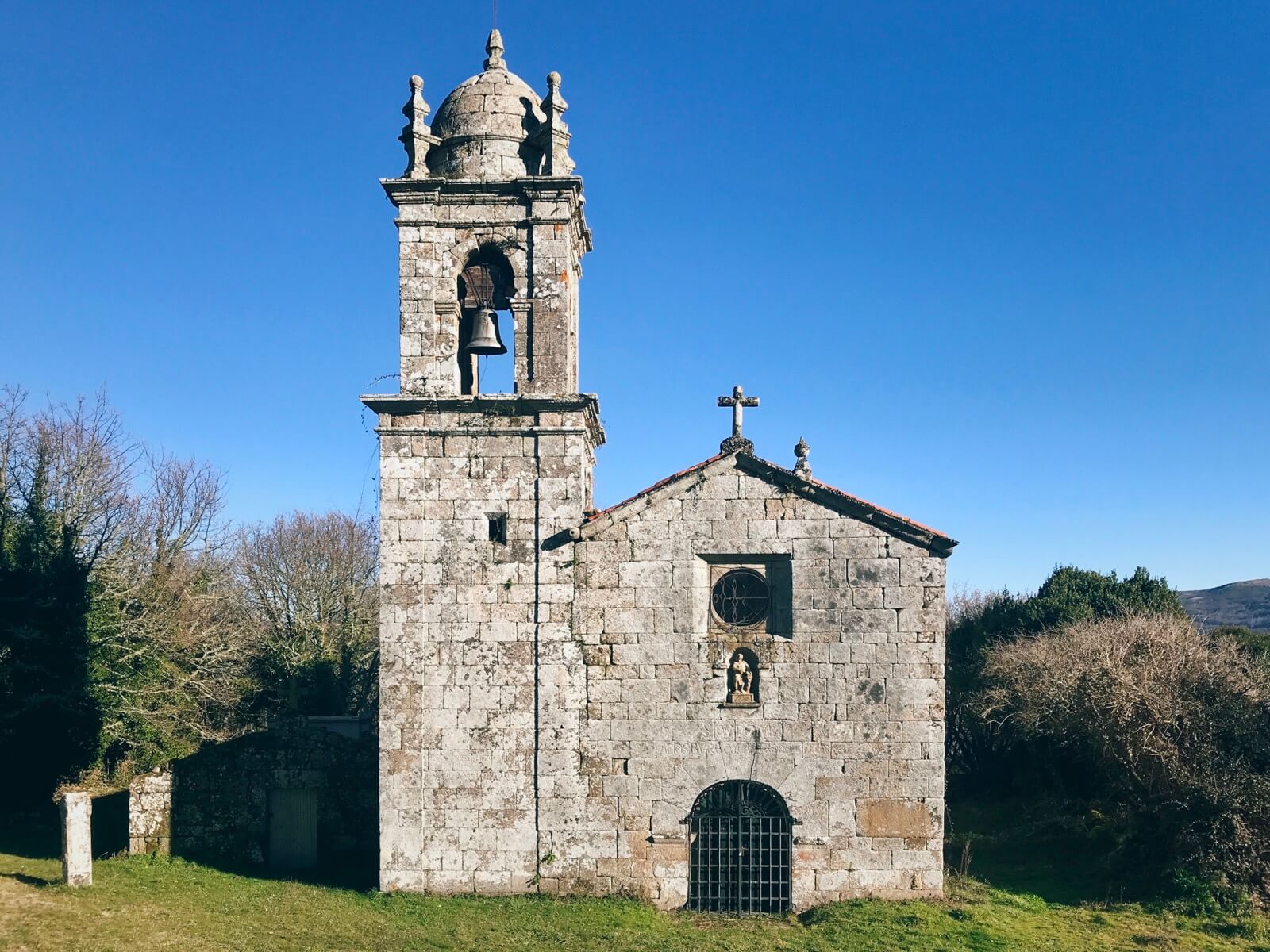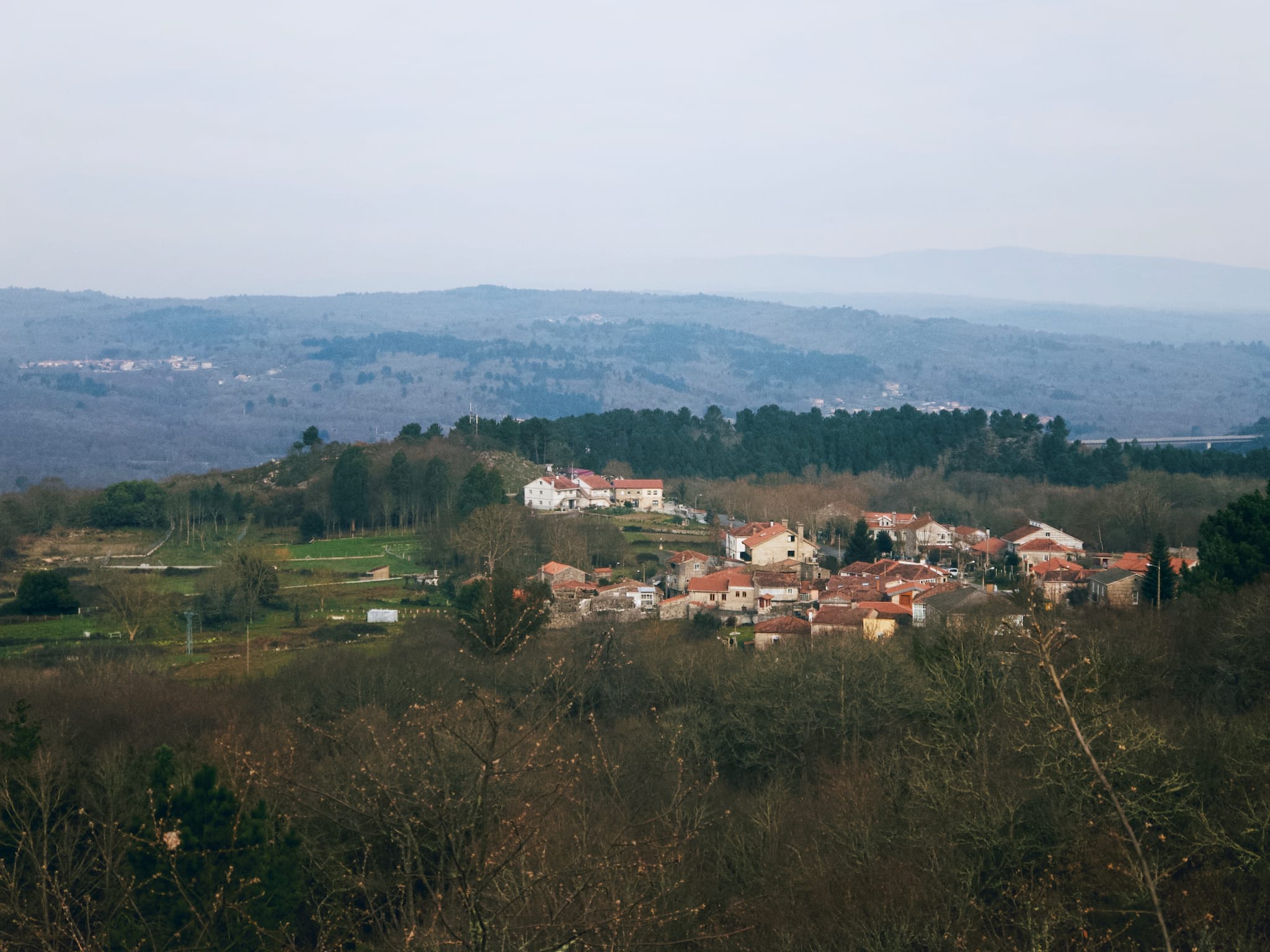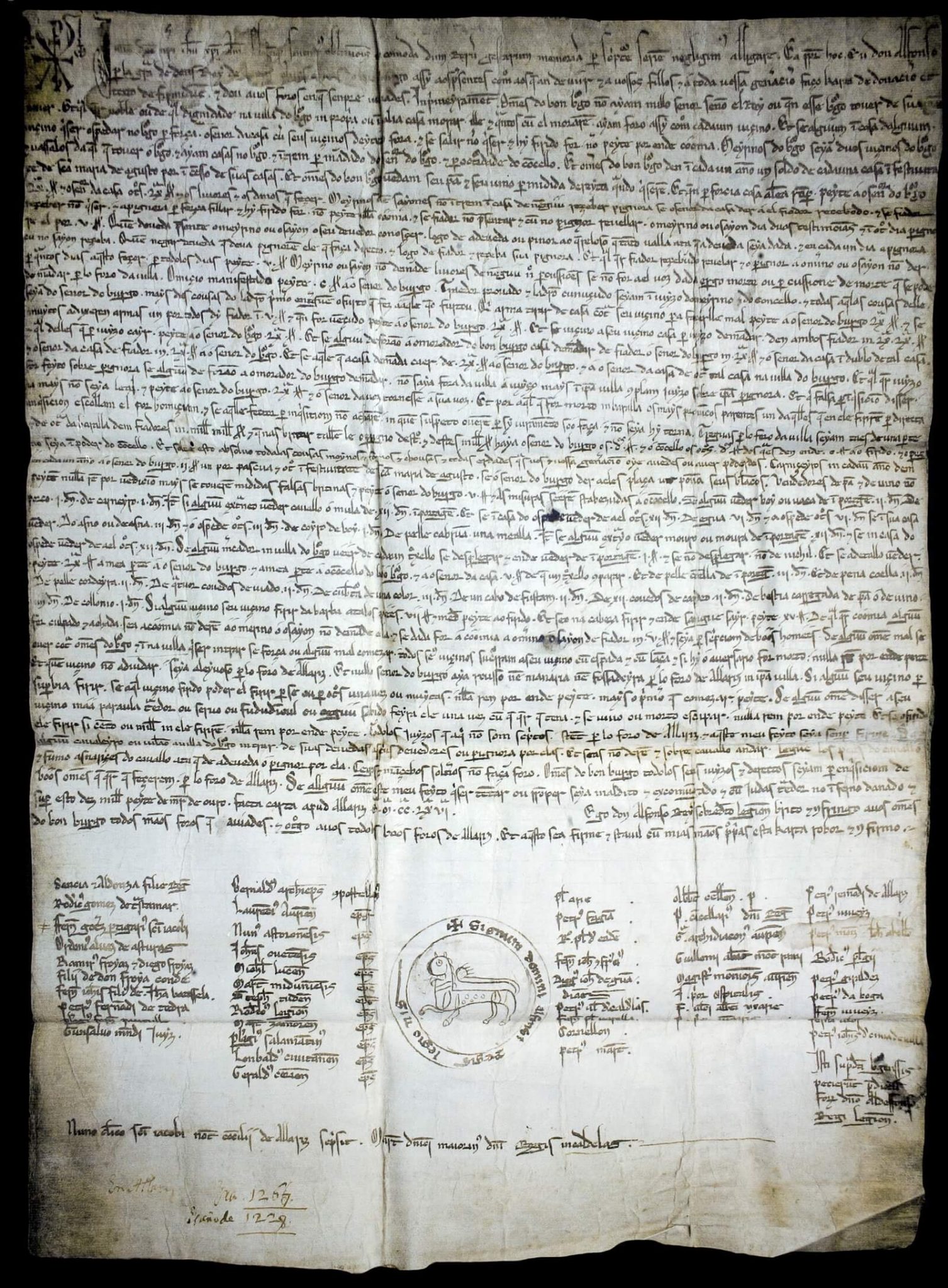
Galicia
Historic but stateless nation located in northwestern Spain with its own culture, language, and identity
On the Route of Stone and Water

Igrexa de San Xoán de Camba

Portrait of a Village

Walking up the road, climbing up to where the power lines bisect the monte, I was able to get a photo of the village. We’re down there somewhere, trying to stay warm. Not shown is the town of Allariz, where there’s more liveliness. Ourense province is wiggling its way into my heart in a profound way.
The Oldest Known Document Written in Galician

The Foro do Bo Burgo de Castro Caldelas begins:
“In nomine domini nostri Ihesu Christi. Amen. Plerumque sentimus oblivionis incomoda, dum rerum gestarum memoriam per scripture seriem negligimus alligare. Ea propter hoc Eu don Alfonso porla gratia de Deus Rey de Leon a vos omes, assy aos presentes como aos que an de víír, et a vossos fillos et a toda vossa generacion faço karta de donacion et texto de firmidũe, et dou a vos foros en que sempre vivades.”
The small town of Castro Caldelas is situated in the northern part of the province of Ourense. Upon arriving, you’re struck by the beautiful view of the well-preserved castelo. With only around 1,200 inhabitants, this place proudly holds on to a deep cultural and historical heritage that begins (but certainly doesn’t end) with the Foro do Bo Burgo de Castro Caldelas.
The Charter of the Good Town of Castro Caldelas was signed by King Alfonso IX of León and Galicia and established the rights and privileges of the people of Castro Caldelas in the year 1228. It also happens to be the oldest known written document in Galician. It wasn’t the town’s first royal charter, (the earlier charter was written in Latin by King Ferdinand II of León and Queen Doña Urraca 56 years before), but Galicians hold on to this document as evidence of the prestige Galician had in the Middle Ages and should have once again.